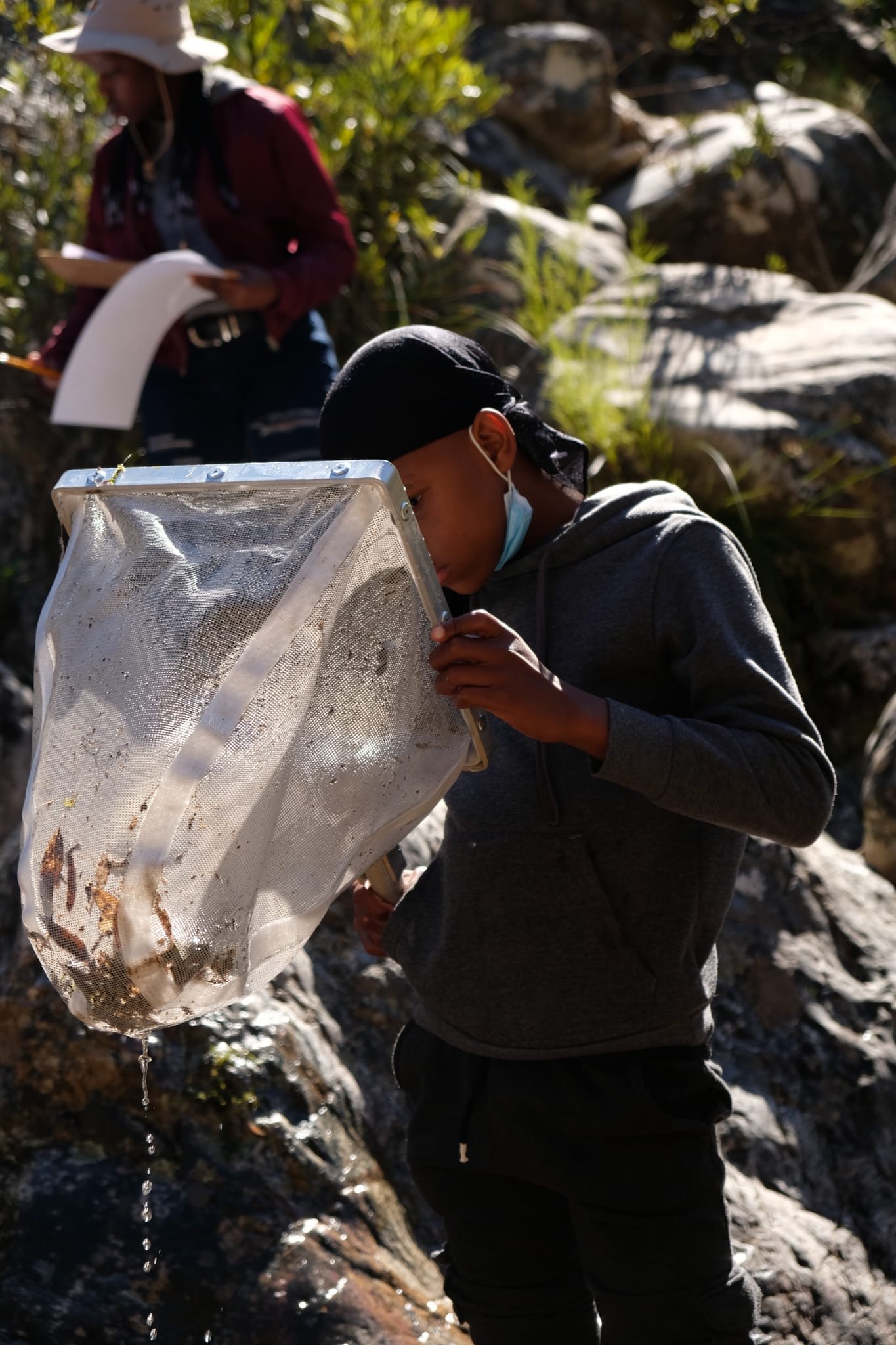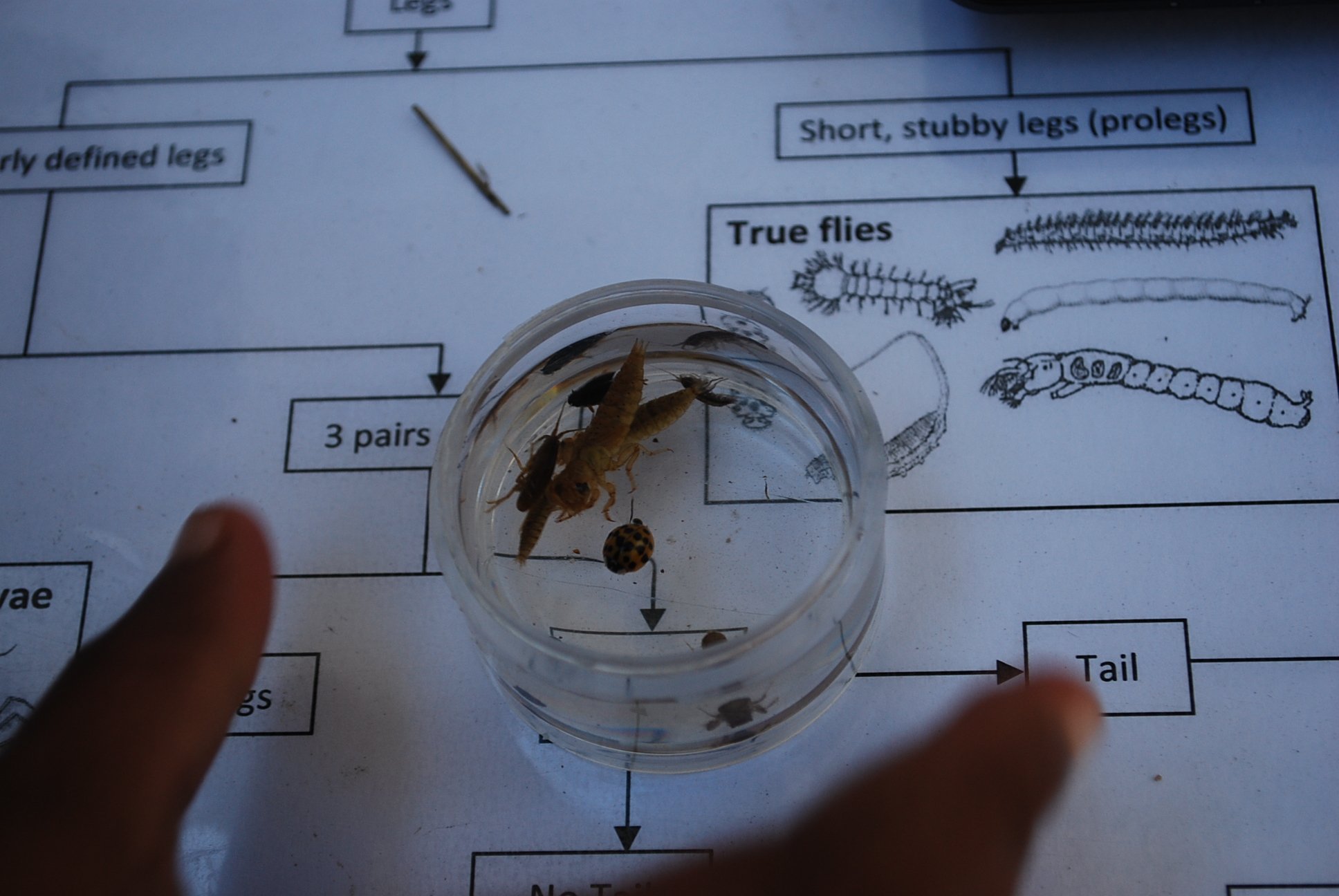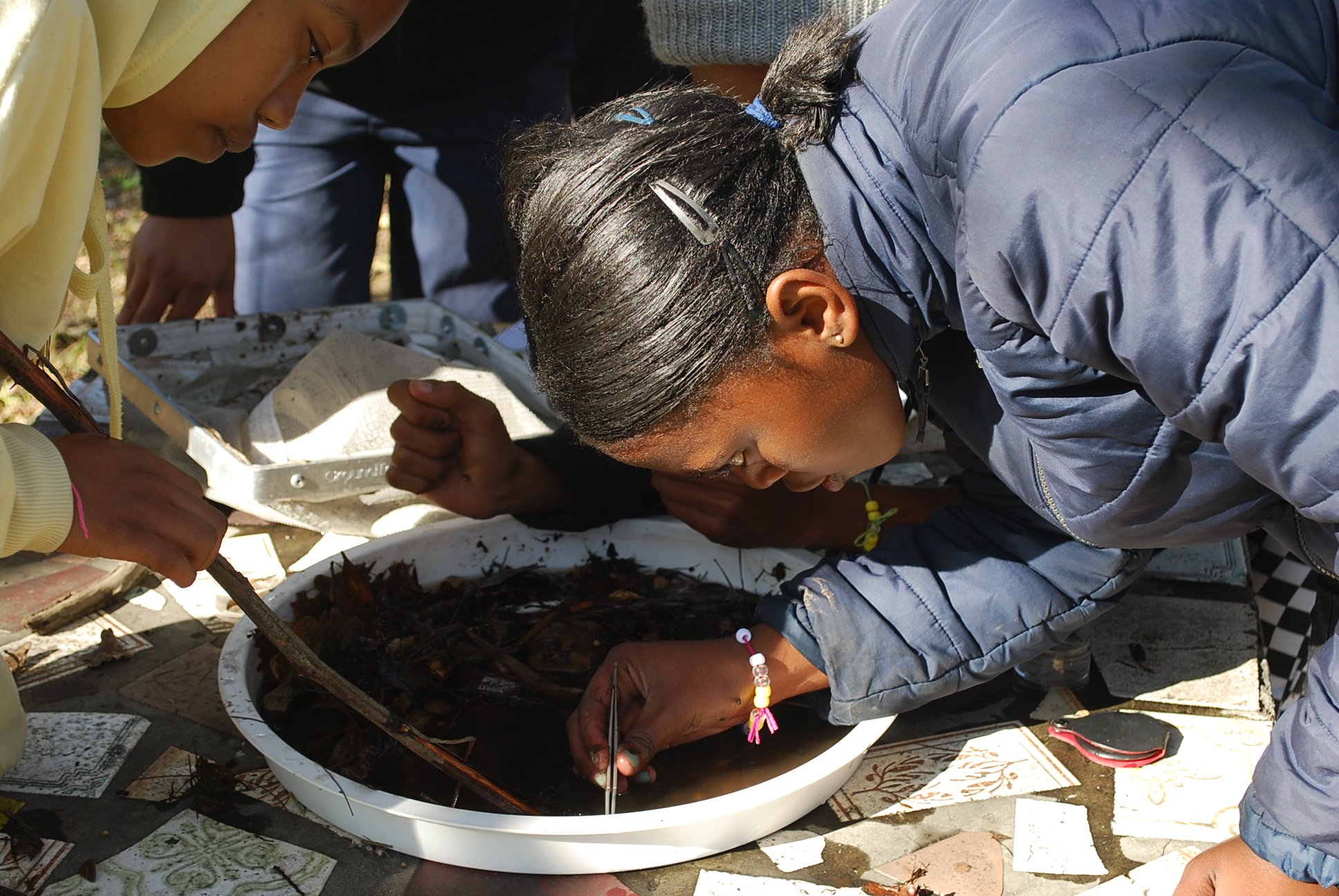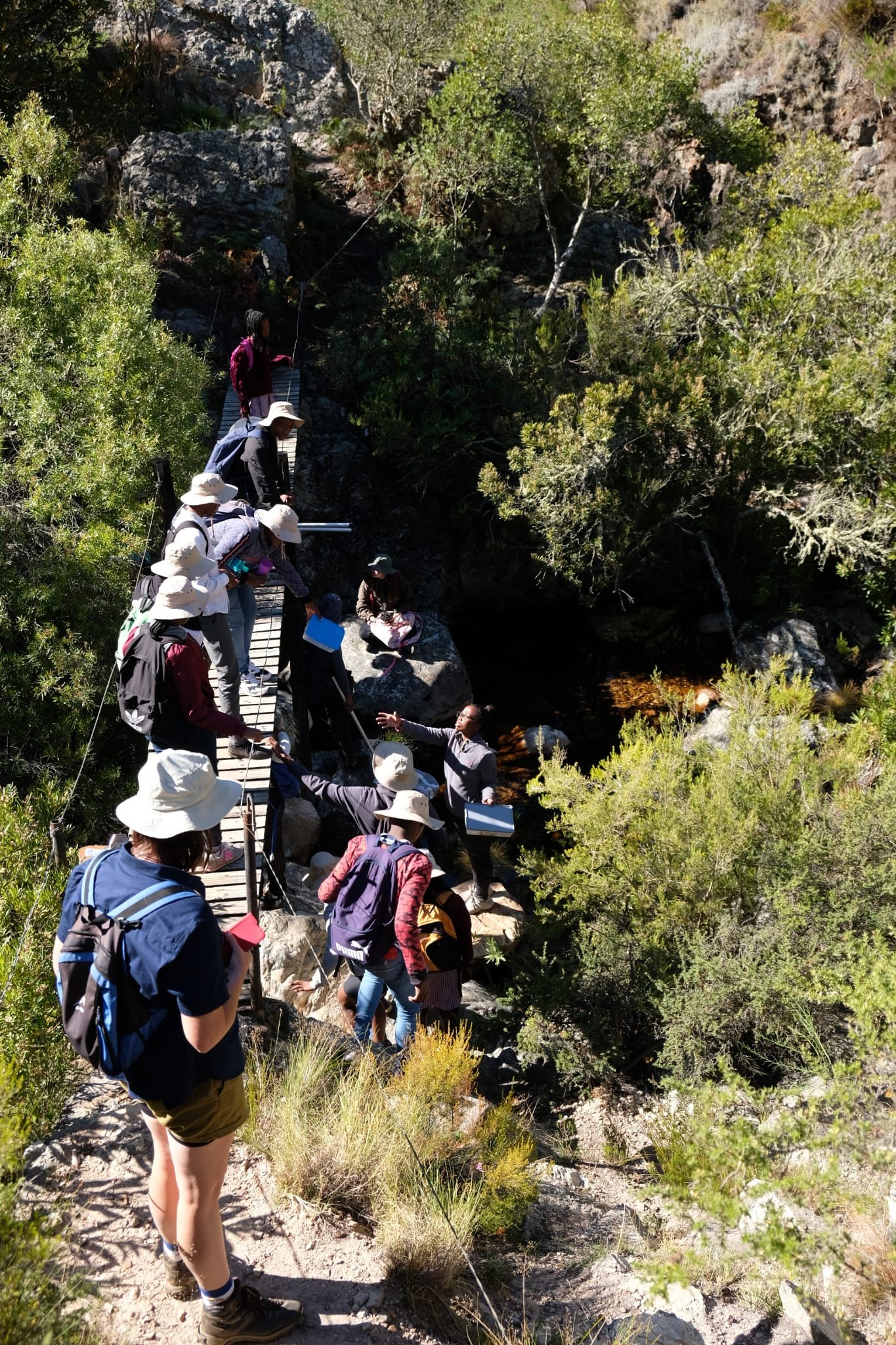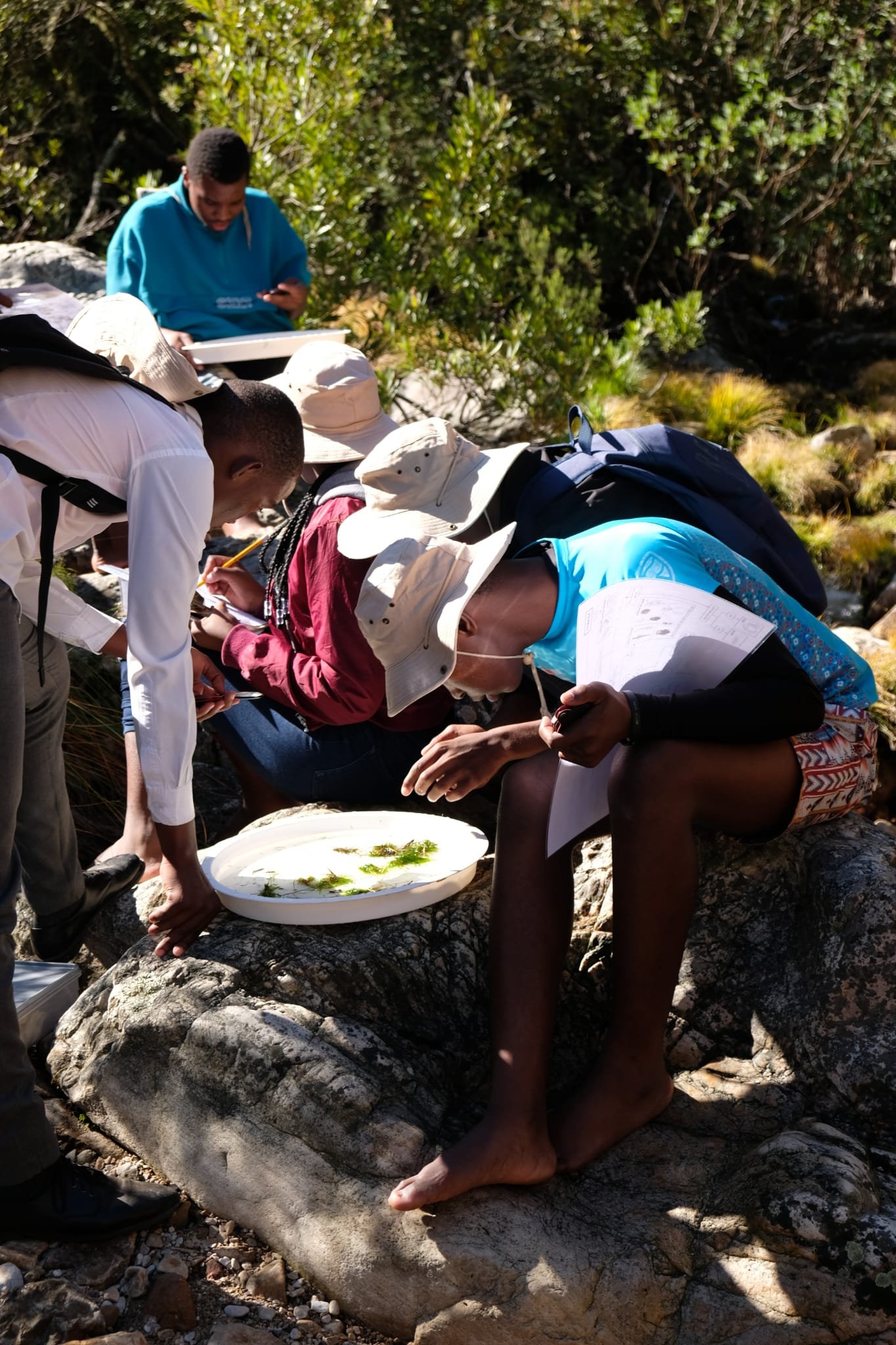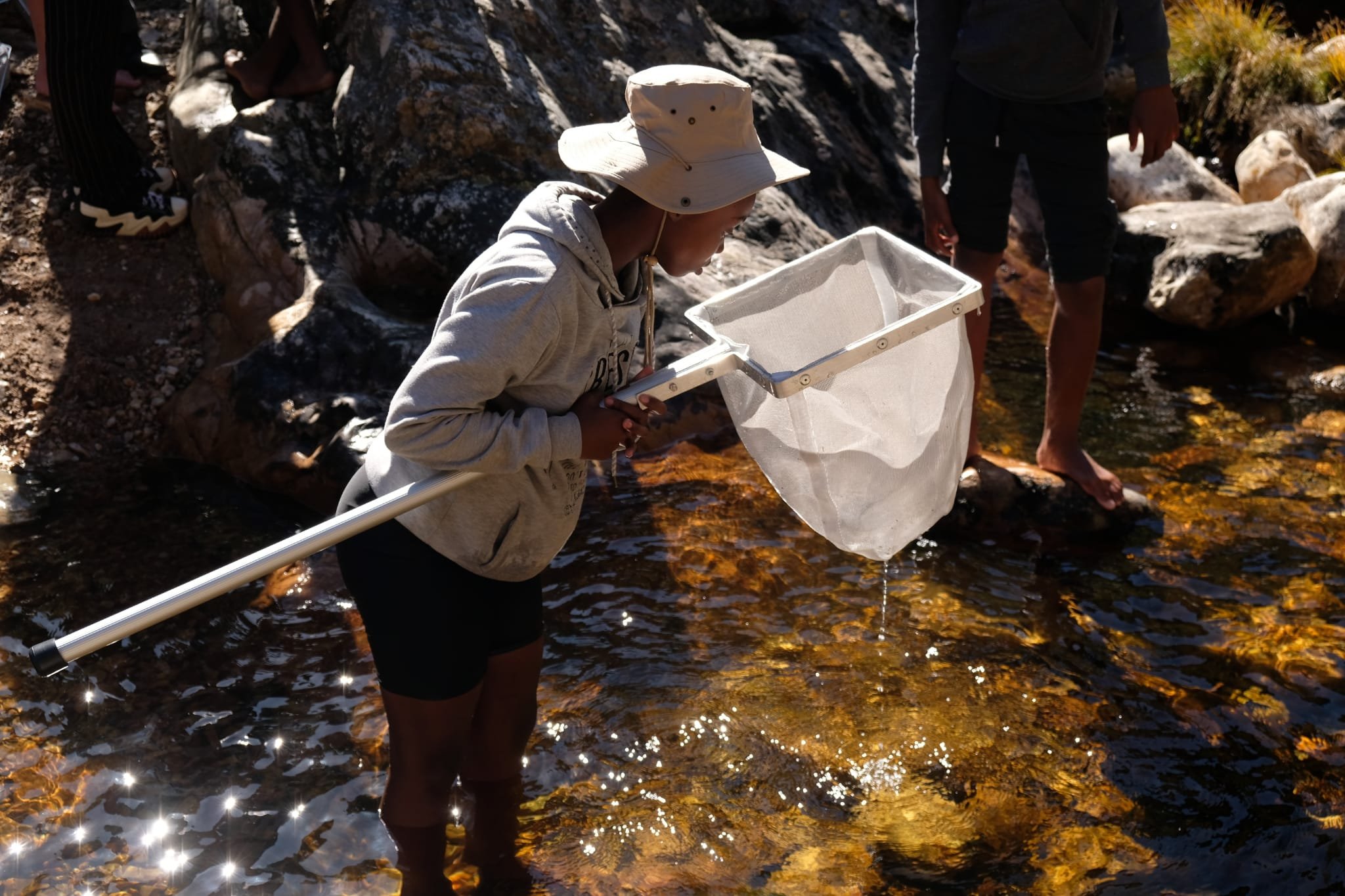How healthy is the river?
As part of Cape Winelands Biosphere Reserve’s (CWBR) environmental education outreach events, the CWBR team regularly shares the river health monitoring method, miniSASS, with children and youth, as part of the mobile education unit STEAM-Y* activities.
(*Science, technology, engineering, art, and mathematics - for youth)
Participants can learn about the natural life in their immediate environment, how to determine the health of a river, as well as be introduced to what a healthy river looks like in pristine environments such as nature reserves.
During the outing, the groups are asked to consider where water comes from, what the water cycle is, why it is vital for the survival of all organisms, why some people do not have access to water, and what signs indicate polluted waters. Exploring what water needs to be healthy and why rivers are so important. Then how water is transported from the mountains to the people. That rivers are homes of many little creatures: micro invertebrates.
How it works
The micro invertebrates present in the river depends on the quality of the water and participants identify the life collected with special nets. Using quality assessment sheets, the group learns about the dichotomous key for determining the species of micro invertebrates. When the micro invertebrates are identified the group then marks the presence of this genus in their assessment sheet. Once the group feel confident that they have found everything in their tray, they make the calculation giving the resulting water quality grade, learning that the grade indicates the water quality, not the quality of their work because of what they found!
Taking the evaluation further
To be able to expand on the activities offered through STEAM-Y, the Cape Winelands Biosphere Reserve (CWBR) team hosted a training session at the CWBR Hub in Franschhoek, facilitated by three staff from the Department of Water Affairs and Sanitation (DWS), earlier this year. The two-day workshop was attended by CWBR facilitators, DEA&DP, and interested stakeholders to be trained more in-depth in MiniSASS as well as the understanding of monitoring river health and why it is important.
As part of this training, sessions with two groups of grade 8 learners at Franschhoek High also took place in the afternoon over two days. DWS did a short presentation about river health to the students, explained MiniSASS, and proceeded to do a hand-on exercise with the students in the river flowing alongside the school.
Watch this space for an exciting new project wherein the CWBR team, together with partners, will be training Citizen Scientists in monitoring river health!

